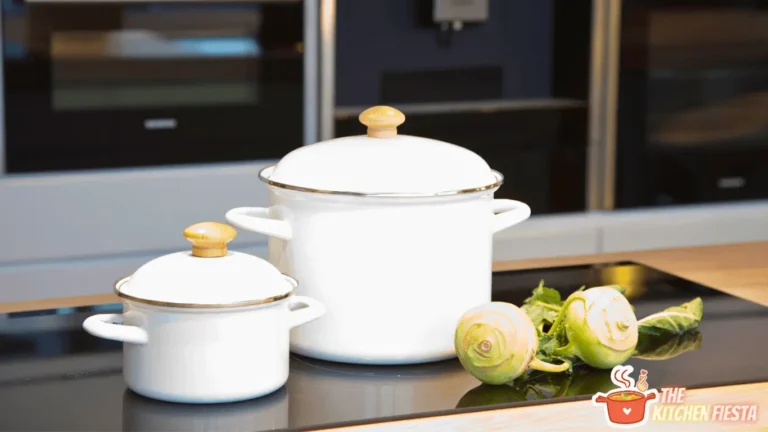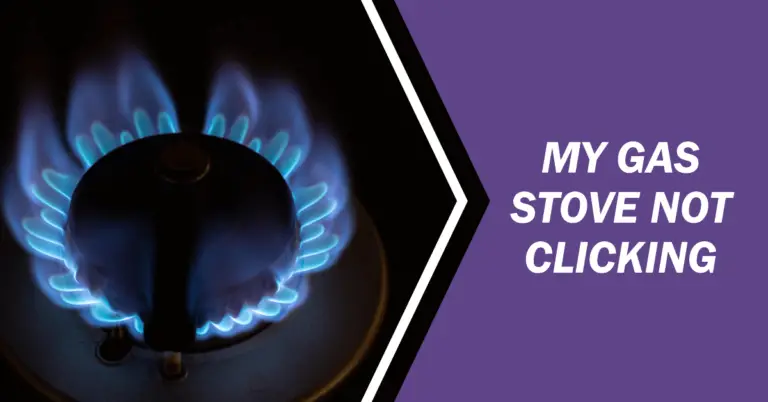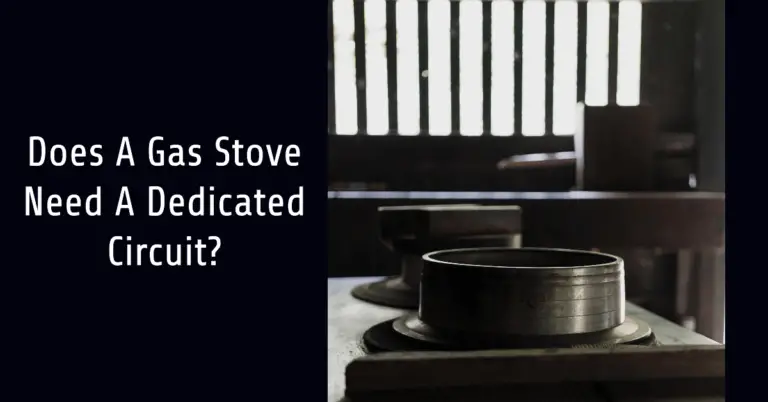Can You Use Clay Pots on a Gas Stove? The Complete Guide

Clay and ceramic cookware brings an artisanal, old-world feel to any kitchen. But can these porous clay pots be safely used on modern gas stoves? This complete guide has the answers.
Cooking with clay pots has become increasingly popular due to the natural, non-toxic properties of clay and its ability to distribute heat evenly for flavorful, nutrient-rich meals. With the right precautions, most clay and ceramic vessels are perfectly safe to use on a gas stove. However, the porous, unglazed nature of terracotta makes it prone to cracking under high heat and is not recommended for gas stovetops.
This article will cover everything you need to know about cooking with clay on a gas range including:
- The safety of various clay and ceramic pots on gas stoves
- Tips for preventing cracking and explosions
- Benefits of using clay cookware
- The best practices for cooking with clay pots on gas and other stove types
After reading, you’ll feel confident using your clay and ceramic cookware on a gas stove for delicious, homemade cuisine. Let’s get started!
Are Clay Pots Safe for Gas Stoves?
Clay pots come in various types including terra cotta, stoneware, porcelain and glazed ceramics. The porosity and durability of the clay determines its suitability for gas stove cooking.
- Unglazed terra cotta – This natural, reddish orange clay is extremely porous and prone to cracking under high heat. The pores allow steam and heat to pass through quickly which can lead pots to explode on gas stoves. Unglazed terra cotta is not recommended for use on gas ranges due to safety issues.
- Glazed ceramics – Many ceramic cooking vessels have an impermeable glaze coating that makes them non-porous, resistant to thermal shock, and prevents steam buildup. Glazed ceramics like ramekins, bean pots and clay bakers are generally safe to use on gas stoves.
- Stoneware – Denser than terra cotta, stoneware clay holds up well under high heat. Its low porosity makes it a good choice for gas stovetops as long as it has a glazed finish. Avoid unglazed stoneware.
- Porcelain – Considered the most durable ceramic, porcelain has very low porosity with its glass-like glazed finish. This makes it extremely resistant to thermal shock, allowing it to go from freezer to stovetop safely. Porcelain pots and pans are an excellent choice for gas ranges.
The general rule of thumb is to avoid unglazed or natural finish clay and terra cotta on gas stoves. The porous nature makes them prone to cracking and explosions under intense heat. Opt for glazed ceramic, porcelain or stoneware cooking vessels which can withstand the high temperatures.
Tips for Using Clay Pots on Gas Stoves
While glazed ceramic pots are generally safe for gas stoves, there are some steps you should take to prevent potential cracking:
- Use a flame tamer – Placing a flame tamer metal plate between your clay pot and the stove burner helps diffuse the flame’s intensity. The tamer distributes heat more evenly preventing hot spots that can crack clay.
- Start with low heat – Bringing the temperature up gradually gives clay cookware time to adapt to the heat without shocking it. Avoid putting a cold clay pot over high heat – temperature changes can cause cracks.
- Don’t preheat empty – Heating up an empty clay pot over high flame can make it expand rapidly and crack. Always add your oil or cooking ingredients before heating.
- Allow ventilation – Ensuring pots have vent holes allows steam to escape rather than building up pressure internally which leads to cracked pots.
- Use thicker clay – Thicker clay holds up better than thin, fragile terra cotta. Use quality clay cookware at least 1⁄4 inch thick.
- Handle with care – Allow clay pots to cool completely before washing or placing on cold surfaces which causes rapid temperature changes.
Taking a few simple precautions allows you to safely cook in clay vessels on your gas stove without damage. Now let’s go over why cooking in clay is so beneficial in the first place.
The Benefits of Cooking with Clay Pots
Beyond just being quaint and nostalgic, cooking with clay pots has some great advantages:
- Natural material – Clay is an all-natural, non-toxic material free of chemicals, toxins and metals. Food cooked in clay has less exposure to these harmful substances.
- Even heating – The organic clay material distributes heat gently and evenly, preventing hot spots that burn food. Meals cook thoroughly without scorching.
- Improved flavor – Clay pots retain and radiate heat remarkably well. This allows food to cook in its own juices, intensifying flavors and taste.
- Nutrient retention – The even, consistent heat helps retain nutrients that may be lost in high temperature cooking. Minerals from the clay can also be absorbed.
- Antimicrobial – The porous clay has natural antimicrobial properties that inhibit bacteria growth. Fermented foods and yogurts culture well in clay.
- Artisanal appeal – There is an undeniable old-world charm to cooking in these beautifully handcrafted vessels. Clay pots add aesthetic appeal.
Clay’s natural abilities give it advantages over metal and other cookware. For the healthiest, tastiest meals, cooking in ceramic and clay can’t be beat.
How to Cook with Clay Pots on a Gas Stove
Now that you know the benefits of clay and tips for preventing cracks, here are some best practices for cooking with clay pots on a gas range:
- Always start with low heat. Turn knob just past LO and gradually increase.
- Don’t leave an empty pot over high heat. Add oil before heating or use a diffuser.
- Let your clay cookware fully preheat before adding food. Dropping ingredients into a hot pot prevents sticking.
- Resist the urge to keep peeking. Lifting the lid repeatedly drops the internal temp. Allow food to simmer undisturbed.
- Add plenty of liquid when cooking. Clay absorbs moisture so dishes may require more liquid.
- Allow thickness of vessel to determine cooking time. Thicker clay retains heat longer so food cooks slower.
- Keep the lid slightly ajar to allow steam to escape rather than building up pressure.
- Allow clay pot to fully cool before cleaning to prevent thermal shock cracks.
With some care taken to prevent thermal cracking, clay and ceramic pots cook beautifully on gas burners and are worth including in your cooking.
Cooking with Clay Pots on Electric and Induction Stoves
If you have an electric, induction, or glass top stove you’re also in luck. These smoothtop surfaces don’t subject clay cookware to open flames or intense heat that can crack it. Here are some tips:
- Place flame diffuser between clay pot and electric burner as the heat diffuser.
- Use medium to medium-low settings for electric and induction. Avoid max heat.
- Preheat on LOW setting to gradually acclimate the clay vessel.
- Lift rather than slide clay pots across smooth glass and induction tops to prevent scratching.
Ceramic, stoneware, and porcelain pots work wonderfully on electric and induction ranges as the gentler, even heat minimizes thermal shock. Have fun cooking!
Key Takeaways for Using Clay Pots on Gas Stoves
- Unglazed terra cotta should be avoided on gas stoves due to porosity issues.
- Glazed ceramics, porcelain, and stoneware are safer choices for gas ranges.
- Use heat diffusers, preheat gradually, and allow ventilation.
- Clay pots add natural flavor and nutrients to dishes cooked in them.
- With some simple precautions, clay pots can be safely used on gas, electric, and induction stove tops.
Cooking in clay may require a learning curve but is worthwhile for the artisanal appeal and cooking benefits. We hope this guide gives you confidence using clay pots on your gas stove. Let us know if you have any other clay cooking questions!






